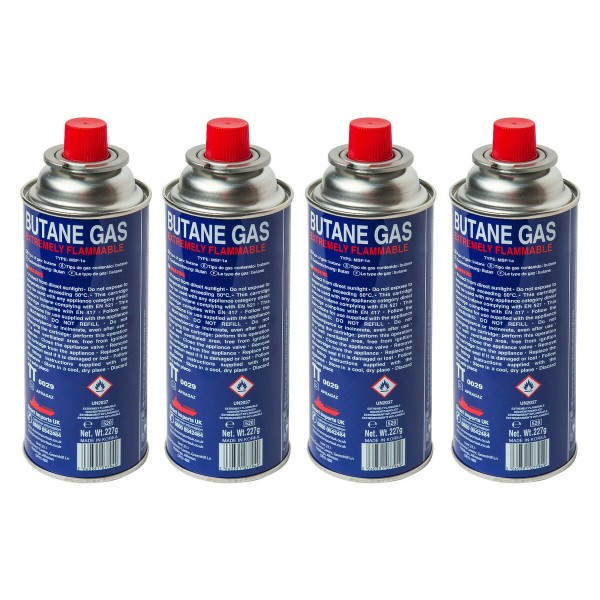
Selecting the appropriate camping gas canister is a fundamental decision that can greatly impact your outdoor adventure. Whether you're an experienced backpacker, a weekend camper, or a novice in the world of outdoor cooking, understanding the nuances of different gas canister types, sizes, and fuel mixtures is essential. In this comprehensive guide, we'll explore the factors to consider when choosing the right camping gas canister, ensuring that your outdoor cooking experiences are safe, efficient, and enjoyable.
Gas Canister Types
Butane camping gas canisters are known for their ease of use and are often used in portable stoves and camping grills. They are ideal for warm weather camping and are available in both threaded and non-threaded (Bayonet) designs.
Propane Canisters: Propane is a versatile fuel suitable for a range of weather conditions. Propane canisters are typically larger and heavier than butane canisters, making them better suited for base camp cooking or car camping.
Isobutane Canisters: Isobutane is a blend of butane and propane and offers good performance in various temperatures. It is commonly used in canisters designed for backpacking stoves.
Mixed Fuel Canisters: Some canisters contain a mixture of fuels like butane, isobutane, and propane. These are versatile and perform well in a range of conditions.
Canister Sizes
Gas canisters come in various sizes, and choosing the right size depends on the duration of your trip and the type of cooking you plan to do
Small Canisters: These are compact and lightweight, suitable for short trips or solo backpacking. They are often used with ultralight stoves.
Medium Canisters: Medium-sized canisters offer a good balance between portability and fuel capacity, making them suitable for weekend camping trips.
Large Canisters: For longer trips, group camping, or extended base camp stays, larger canisters provide ample fuel.
Temperature Considerations
Gas canister performance can be affected by temperature. Butane, for example, can struggle in colder conditions. Consider these tips:
Cold Weather Mixes: Some gas canister are specifically formulated for cold weather use, with a higher propane content for improved performance in low temperatures.
Warming the Canister: Keep canisters warm by placing them in your sleeping bag or using insulating canister sleeves in cold weather.
Preheat Your Stove: Preheating your stove by running it for a few seconds before cooking can help improve performance in cold conditions.
Safety Precautions
Storage: Store gas canisters in a cool, dry place away from direct sunlight and heat sources.
Transportation: When traveling with gas canisters, secure them to prevent rolling and damage.
Check for Leaks: Before using a canister, check for leaks by applying soapy water to the valve and connections. Bubbles indicate a leak.
Dispose of Empty Canisters Properly: Many gas canisters are recyclable. Check local guidelines for proper disposal.
Conclusion
Choosing the right camping gas canister is a crucial step in ensuring a successful outdoor cooking experience. By considering factors such as canister type, size, temperature conditions, and safety precautions, you can make an informed decision that enhances your camping or backpacking adventures. Whether you're savoring a hot meal at the end of a challenging hike or enjoying a warm drink under the starry night sky, the right gas canister will be your reliable companion in the great outdoors.
